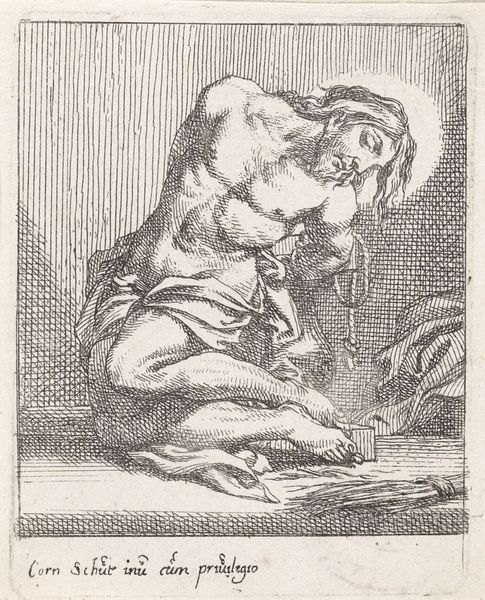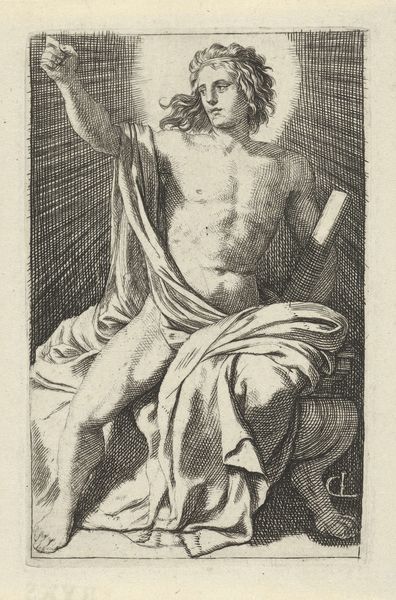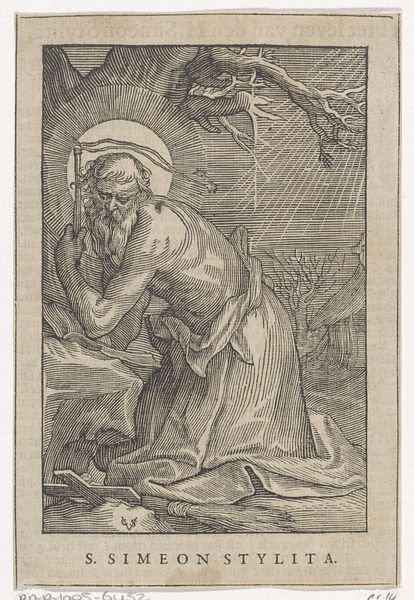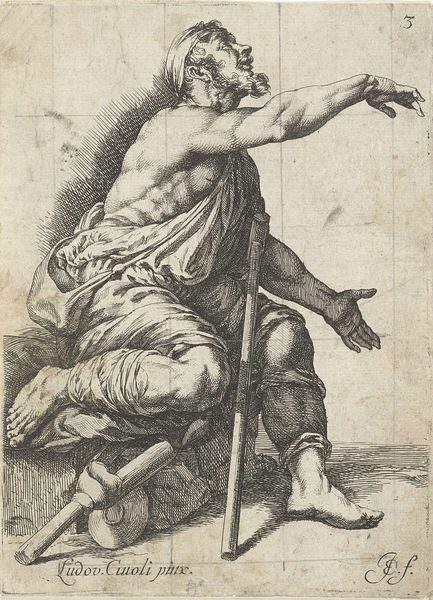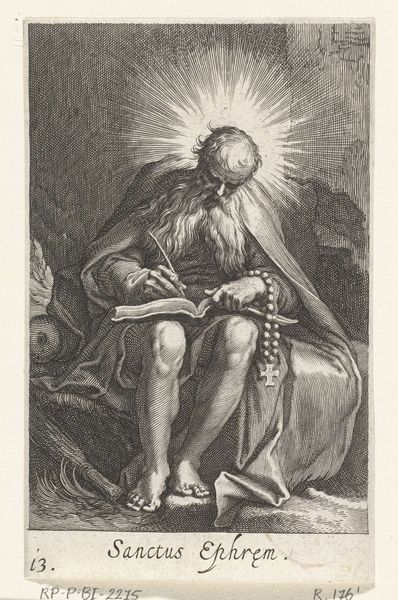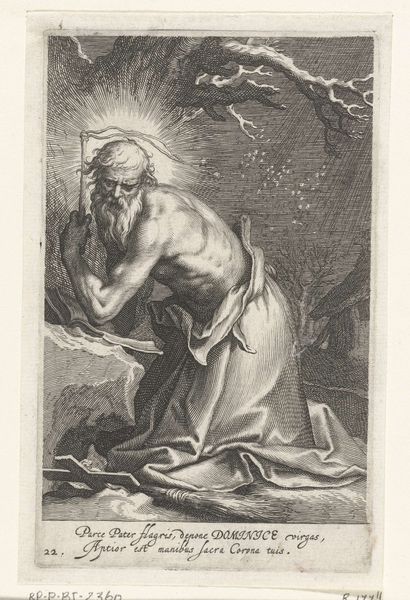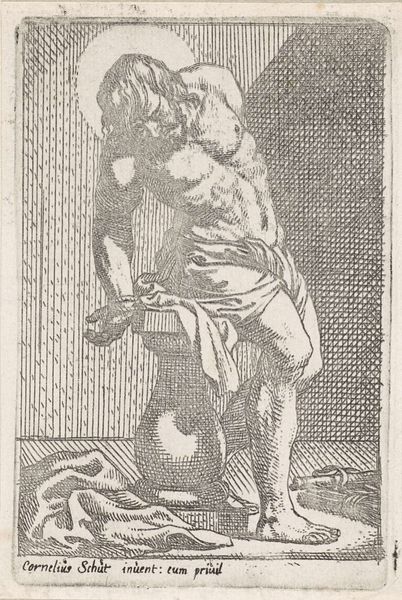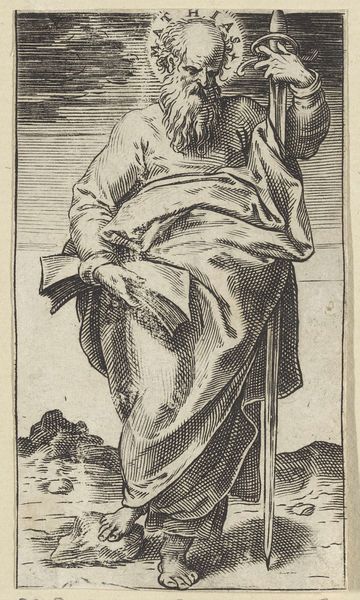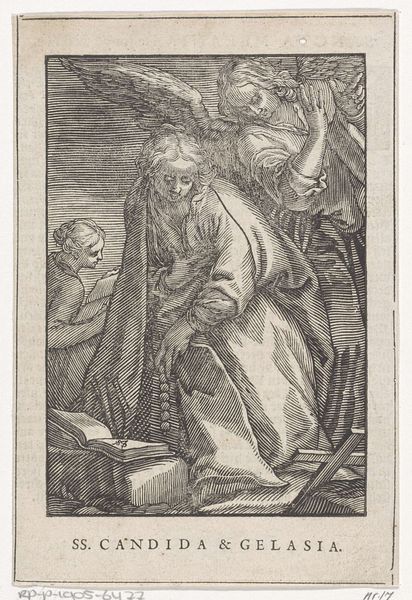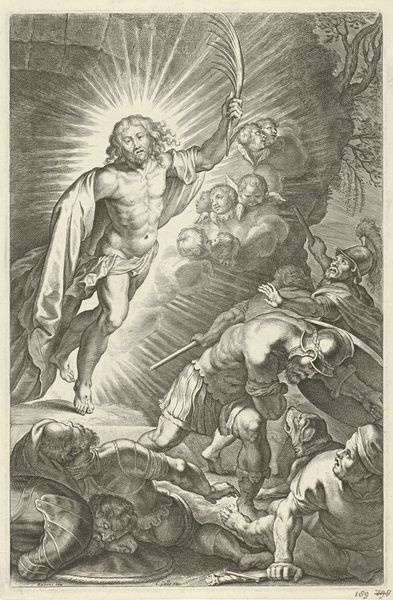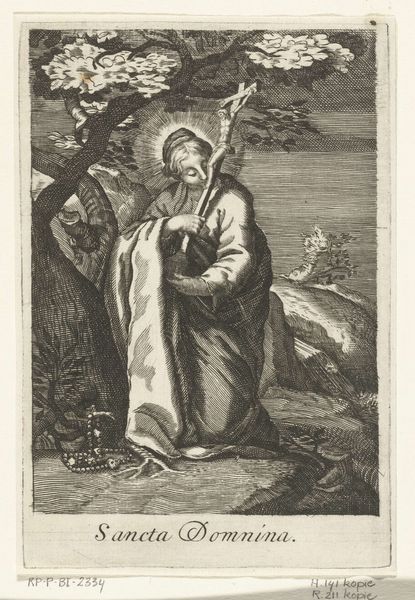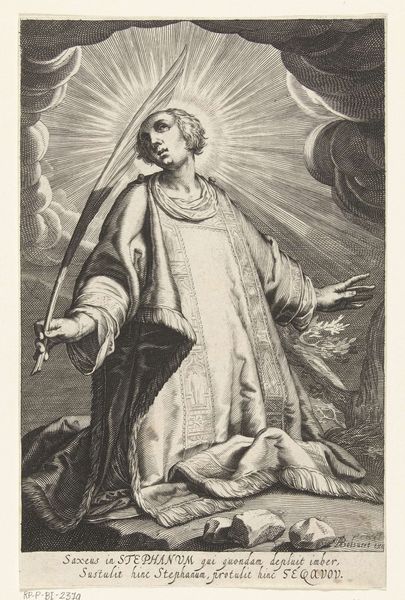
print, engraving
#
baroque
# print
#
figuration
#
history-painting
#
nude
#
engraving
Dimensions: height 95 mm, width 71 mm
Copyright: Rijks Museum: Open Domain
Curator: Welcome. Before us is "Christus aan de geselpaal," or "Christ at the whipping post," a Baroque-era print created sometime between 1618 and 1655 by Cornelis Schut, currently held at the Rijksmuseum. It is an engraving on paper. Editor: The raw emotion hits immediately. The stark contrast and jagged lines amplify the scene’s inherent violence. It is brutally effective. Curator: Schut definitely captures that agony through very intentional symbolism. The abandoned instruments of torture hint at a deeper narrative of sacrifice and powerlessness. Consider also the halo, which anchors the hope associated with this particular history. Editor: Right. Formally, the way the horizontal lines crowd above him and contrast to the dense hatching below seems to compress the figure, underscoring a sense of unbearable weight and constraint. The light emphasizes musculature in ways that heighten a physical suffering that can be viscerally sensed. Curator: The instruments themselves resonate with layers of meaning; they aren't merely tools but instruments of imperial, often cruel authority that persists through visual representation, as this scene would have had profound iconographic significance in its time, of injustice but ultimately the power of Christian salvation. Editor: And consider the curve of Christ’s back: It mimics the curvature of the whip, a visual echo that reinforces the pain. The diagonal lines across his body could represent physical scarring as well. Curator: Precisely, visual language is layered; you sense in his bent body and turned head a feeling of pathos and deep humanity. Editor: The artist clearly exploits these compositional and lighting techniques to amplify the psychological impact, it really is a strong statement. Curator: A powerful demonstration of faith, rendered in lines and shadow. It makes one consider how meaning accumulates within forms and symbols that are familiar, passed through time. Editor: Exactly. The raw aesthetic mirrors, then, and perhaps amplifies the narrative impact of the original historical setting itself.
Comments
No comments
Be the first to comment and join the conversation on the ultimate creative platform.
